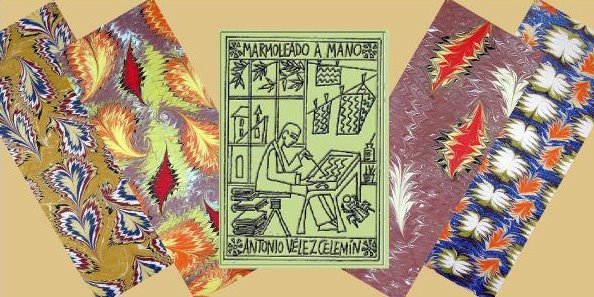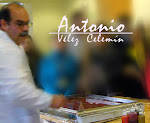*******************
On December, the second, it will be presented at the Conferences’ Hall of Madrid Complutense University, the book “Decorated papers in the bindings of the library of the Toledo Cathedral” that I have written in collaboration with Antonio Carpallo.
This book is the first monograph in Spanish dedicated exclusively to the study of the decorated papers used in the bindings of a bibliographical fund. So it is included in the most modern currents on bookbinding studies, which deal with all its elements without forgetting any. Because, really, the decorated papers have been relegated on these studies, at least in Spain, where only a little time ago they had began. Even at the point that, when someone has written a few words on this subject, they have been classified only between "white" papers or "decorated" papers (meaning nothing more than: with colours).
The invention of printing was the event that encouraged the development of very diverse techniques of paper decoration in Europe. Books were edited by thousands, volumes that must be bound, and then bookbinders needed a big quantity of papers that should hide the leather on the back of the pasteboard and the "gap", the inner joint between it and the book.
Bookbinders developed two of the decorative paper techniques that with major frequency we found in books used as endleaves: marbling, put to point in Europe by French bookbinders from the beginning of the XVIIth century, and paste papers, probably of northern origin, slightly later.
Nevertheless, as well as the printing generated this demand also it separated other craftsmen of his traditional work. Wood engravers, who had been the makers of the xylographic books previous to the printing, the Poor’s Bible or the Apocalypse, will have to change his activity after it. The book printers obtain the privilege to use the vertical press and the ancient engravers would have to invent different printing methods. France and Italy develop new xylographic impression techniques that, full of colors, they will use for “rooms garment” and for bookbinding. Even they will replace colors for gum and dyed wool or for ink or golden alloy and then it will become into fashion the "velvet" or “brocade” papers.
The book that I present wishes to open the sense in spanish of the term “decorated paper” to the different techniques of paper decoration that are used in bookbinding. The fund on which the study has been realized has allowed us to describe practically all the mentioned techniques, since the part corresponding to the legacy of the Cardinal Zelada was bound mostly in Italy during the XVIIIth century, very probably with papers realized or distributed by the famous factory “Remondini“, and contains abundant examples of each one.
***













